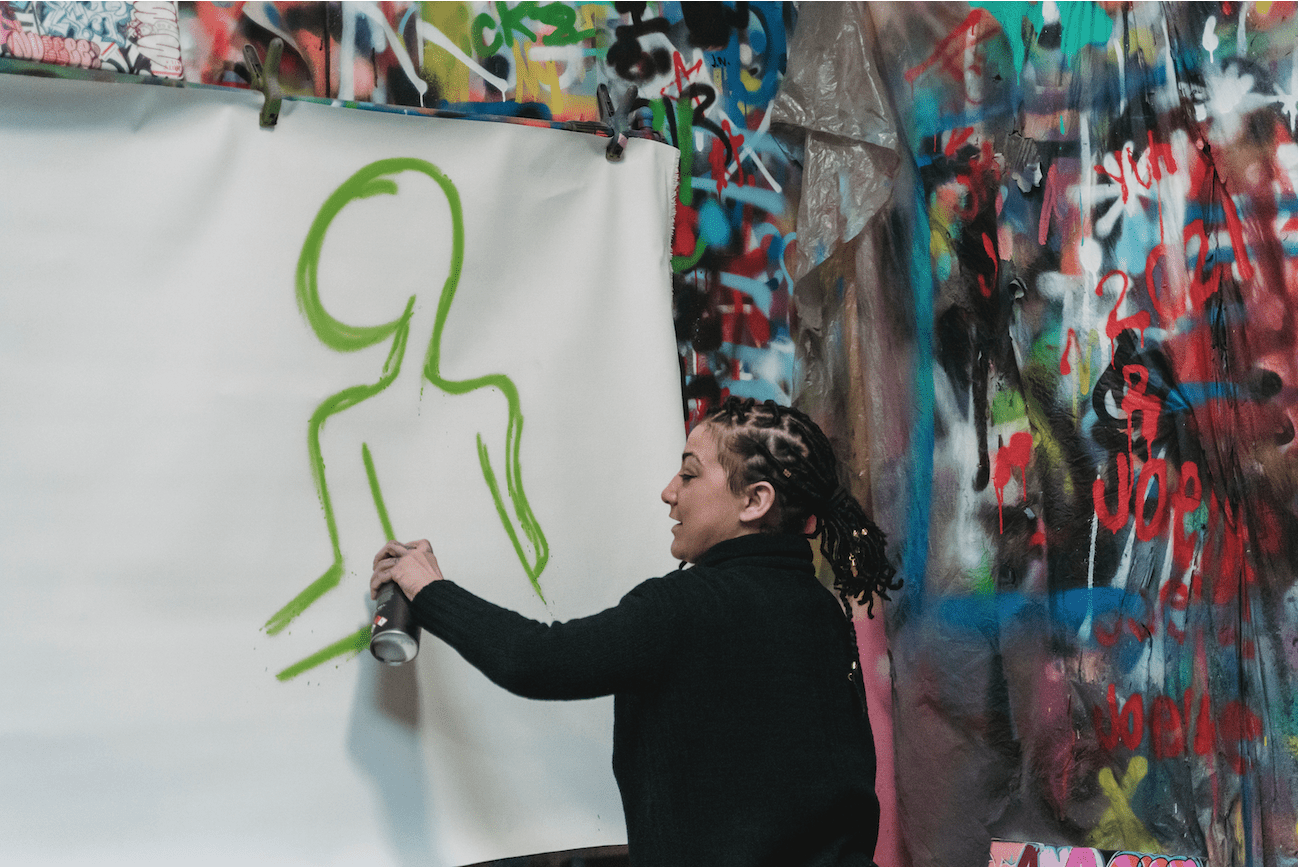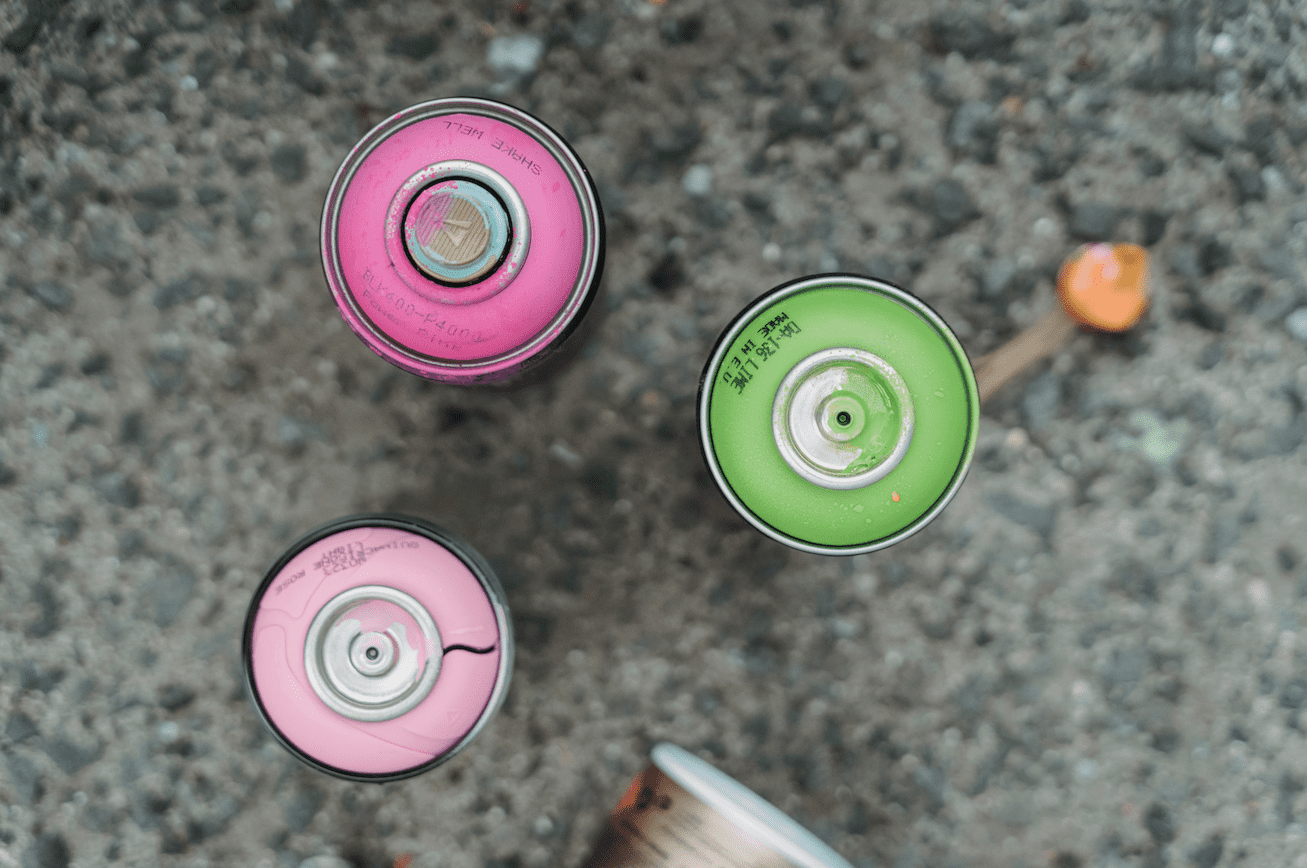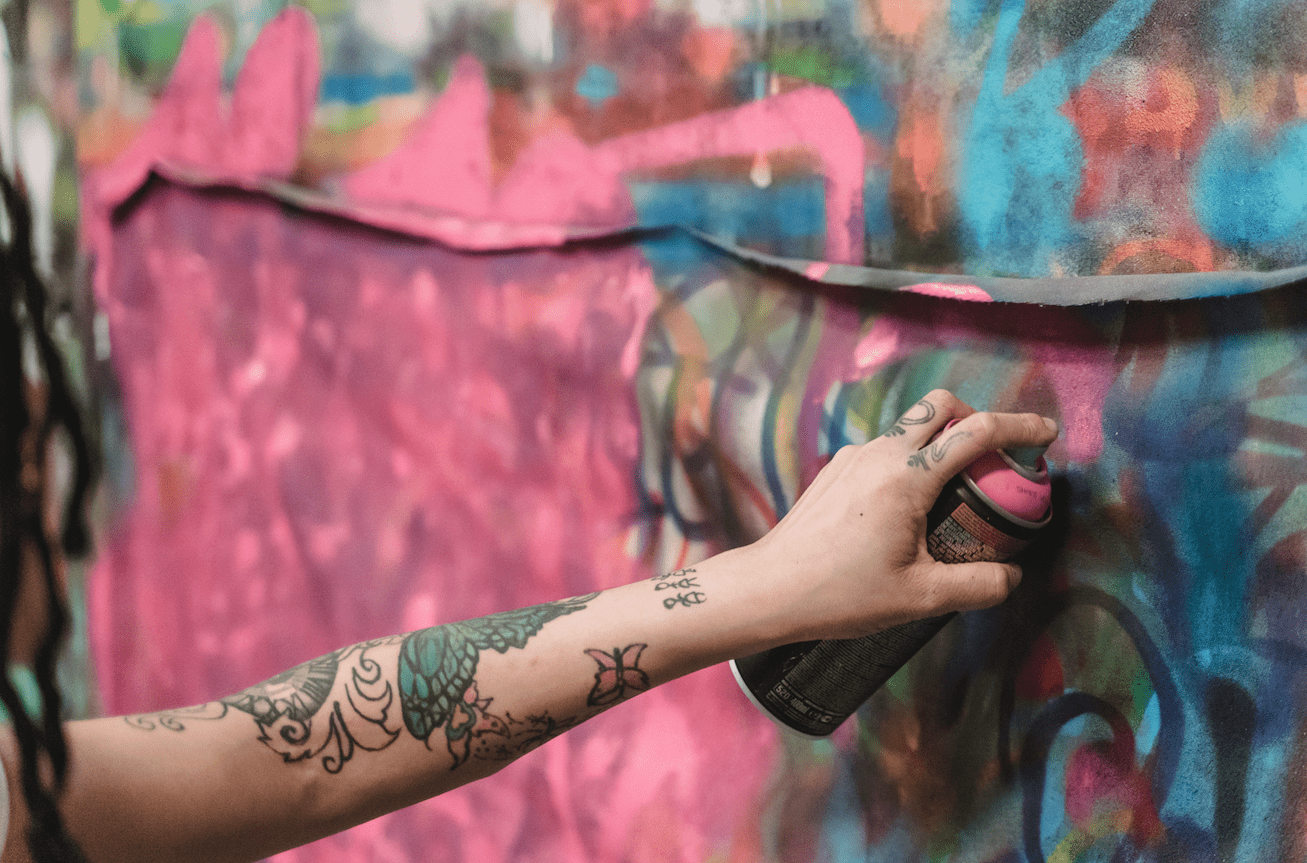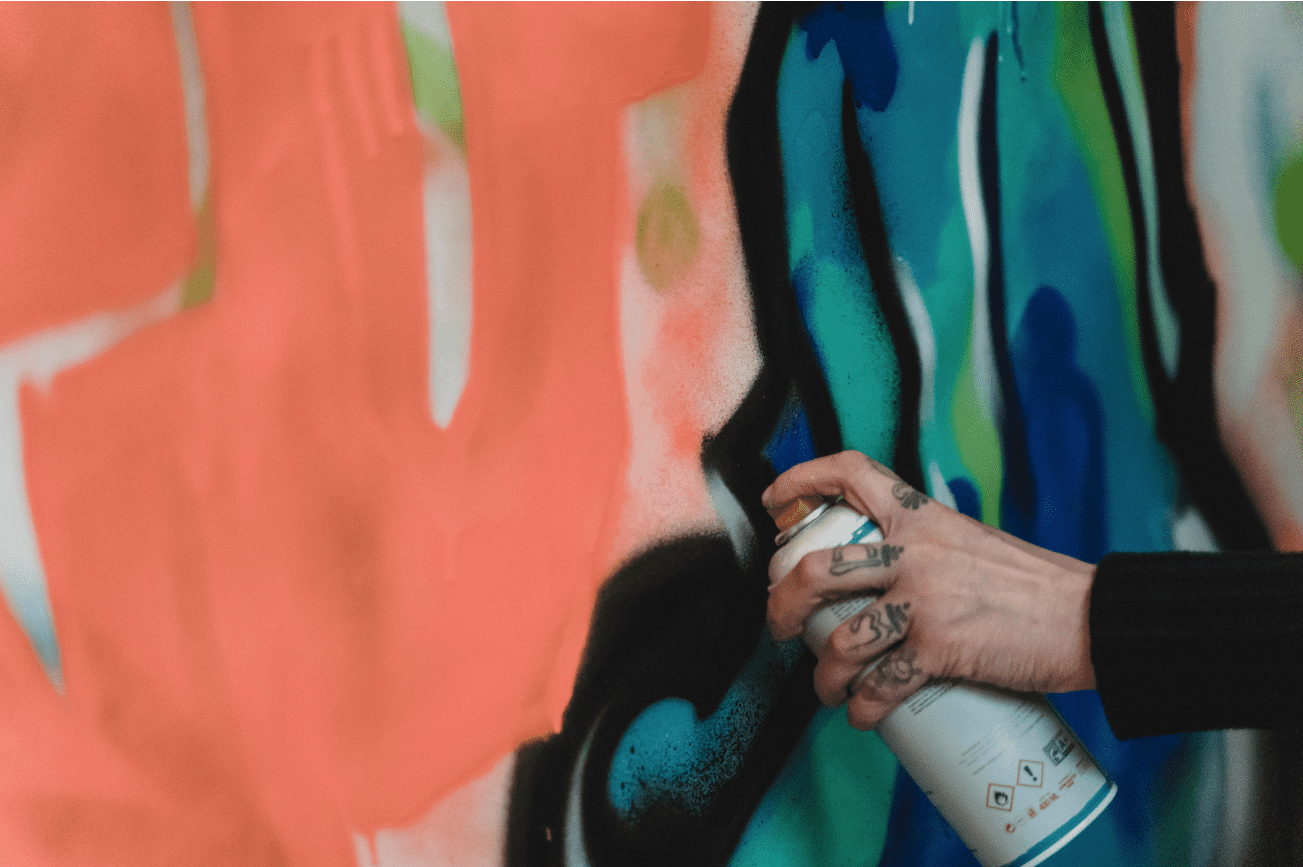Step Up Your Canvas Art Game with These Spray Paints
Hey there, spray paint experts! If you're looking for the best way to jazz up a canvas with vibrant colors, then look no further. When it comes to finding the ideal spray paint for your masterpieces, nothing beats doing your research and getting the right information. Here's a comprehensive guide on what type of spray paint is best suited for painting canvas.
Whether you’re an experienced artist or just starting in the world of art and creative expression, choosing the right kind of spray paint can make all the difference. There are so many different types available that it can be overwhelming when trying to decide which one will give you the desired results. With this guide, I'm here to help break down some key points about each option so that you have everything you need to make an informed decision.
When selecting spray paint for canvas, it's important to consider things like coverage area, drying time, fade resistance, and odor levels. All these factors play into how easy (or difficult) it'll be to work with and achieve the result that suits your vision perfectly. So without further ado, let's dive into all the details about choosing the perfect spray paint for your next masterpiece!
Types Of Canvas Paint
When it comes to spray paint on canvas, you need to know the types of paint available. The most popular are acrylic, oil, watercolor, and spray paints. Acrylic is a fast-drying paint that can be applied in layers for even coverage with no brushstrokes. It's also easy to clean up with soap and water once dry. Oil paint has a longer drying time than acrylic but provides a more durable finish when cured. Watercolour offers vivid colors and requires minimal prep work since it absorbs into the fabric without leaving much residue behind. Lastly, there’s spray paint specifically designed for canvases that come in both aerosol cans or as a pump action device - this gives you complete control over how many colors you want to apply at any given time. Each type of canvas paint has its advantages so finding the right one for your project will depend on what look and feel you're going for! Now that we have discussed the types of canvas paints available, let's move on to prepping the surface before applying them...

Prepping The Canvas Surface
Having discussed the various types of paints to use on a canvas, let's dive into preparing the surface for painting. Prepping the canvas is essential in creating a quality piece of art that will last. Whether it’s an acrylic or oil painting, this process should not be overlooked!
To begin prepping your canvas, you'll need to start with stretching and priming it. Stretching ensures that there are no ripples or wrinkles when applying paint. This can be done by using either stretcher bars or tacking the canvas onto a frame. Once stretched properly, apply gesso coating to prime the surface. Gesso is a mixture of plaster, chalk, and pigment used as an absorbent base coat before applying paint.
When working with oils, also consider adding a layer of rabbit skin glue before applying gesso for additional adhesive strength between layers of paint.
Lastly, if you're looking to get creative with spray paint techniques like stenciling or airbrushing then prepare your canvas accordingly first. Make sure any loose fibers have been removed from the fabric and lightly sand down any rough patches before beginning work. After these steps are taken care of you can now move on to spray painting tips and techniques!
Spray Paint Tips And Techniques
Preparing, protecting, and perfecting your canvas with spray paint is a process of patience, precision, and persistence. As an aspiring artist or casual crafter armed with some simple spray painting tips, you can create masterpieces that will last for years to come.
First and foremost, safety should be the priority when it comes to handling any type of paint. Wear protective gear such as overalls and gloves while using a respirator mask if necessary. Additionally, make sure the area you are working in is well ventilated; preferably outdoors with wind blowing away from you.
Once precautions have been taken, practice makes perfect! Before applying the final coat to your masterpiece, try out various techniques on scrap pieces of paper or cardboard. Get comfortable with holding the nozzle properly at different distances for desired results. Experiment by overlapping colors to add depth and texture and apply layers of thin coats instead of one thick layer to avoid drips and runs in your design.
Now that you’ve got a few spray painting tips under your belt, let’s move on to choosing the right brand for your project.

Choosing The Right Spray Paint Brand
When it comes to selecting the best spray paint for canvas, there are a few brands that stand out from the rest. The most popular brand is Krylon. This company has been around since 1947 and offers a wide range of colors and finishes. Their products have an excellent reputation in terms of adhesion and durability on any type of surface, including canvas. Other popular brands include Rust-Oleum, Montana Gold Acrylic Paint, Liquitex Professional Spray Paints, and Dupli-Color Automotive Finishes.
No matter which brands you choose, make sure you get one made specifically for painting on canvas or fabric. These paints will be more likely to adhere properly than regular spray paints that are used for metal surfaces like cars or furniture. Also, keep in mind that some types of paint may require additional preparation before use such as priming the surface with primer or sanding down rough spots.
Be sure to read all instructions thoroughly before beginning your project so you know what kind of prep work needs to be done beforehand.
With these tips in mind, you can confidently select the right product for your next canvas painting project! You'll be able to create stunning artwork with ease and enjoy beautiful results every time. Transition: Now that we've discussed choosing the correct type of spray paint brand, let's move on to cleaning up after painting!
Cleaning Up After Painting
Painting with a spray paint can be a fun and satisfying experience, but it is important to remember that the cleanup process should never be overlooked. After you have finished creating your masterpiece, take time to clean up any residual paint or art supplies.
The first step in cleaning up after painting on canvas is to remove as much of the spray paint residue as possible. Use rags or newspaper sheets to wipe away excess paint from the surface of the canvas before tackling deeper stains. For tougher spots, use a damp cloth or sponge dipped in soapy water and gently scrub at them until they are removed. To avoid damaging the finish, always test a small area first before using this method on larger sections of the canvas.

Once all visible paint has been wiped off of the canvas, inspect it for remaining traces of color or texture changes due to previous layers of spray paint application. If necessary, repeat the same steps above until desired results are achieved. Finally, if needed for extra protection against future wear and tear, apply a sealant such as an acrylic-based varnish overtop of your artwork when fully dry for lasting effects that enhance its look and feel.
With these simple yet effective tips for proper canvas maintenance after spraying paint onto it, you will be ready to add those finishing touches to enhance your artwork!
Finishing Touches To Enhance Your Artwork
After you have laid down the base coat of paint, it’s time to consider how to step up your artwork with some decorative accents. Textured effects are simple and fun to do – just use a variety of sprays that create lines or other patterns on top of your canvas. Metallic paints are also effective for adding shine and dimension, while glittery accents can make any piece look more dynamic and eye-catching.
If you want something even more creative and unique, try 3D designs! These aren't as common in spray painting but they add so much visual interest when done correctly. You could even combine all these elements into one masterpiece for maximum impact. Whether subtle or bold, there's always an opportunity to spice things up with a few finishing touches.
Now that we've discussed enhancing artwork with different types of finishes, let's move on to safety considerations…

Safety Considerations
So, you've chosen the perfect spray paint for your canvas and are ready to get creative. But don't forget about safety considerations! While it can be exciting to start painting, you must take steps to ensure that your experience is not only fun but also safe.
First, always make sure that you're working in a well-ventilated area with no exposure to airborne toxins or inhaling fumes.
Additionally, wear protective clothing such as gloves and goggles while handling spray paint. This will help protect your skin from direct contact with any harmful substances contained within the product.
Finally, when finished painting, dispose of all materials safely and correctly to avoid potential problems down the line. Don’t just throw them into a trash bin - use appropriate containers so they can be recycled or disposed of responsibly. As long as these safety measures are followed, then spraying away on your canvas should be an enjoyable experience with minimal risks involved!
Conclusion
It’s no secret that spray paint is a great option for painting canvas. With the right prep work, choosing the best brand, and employing some simple techniques, you can create stunning artwork with ease. But as they say “practice makes perfect” - so don’t be discouraged if your first attempts aren't quite what you were hoping for! Keep experimenting to find the style of art and paint brands that suit you best. Above all else, remember to take safety precautions when using any type of aerosol paint.
Spray painting on canvas brings out the artist in all of us – whether it's an intricate mural or just doodling around, it's easy to get creative with this versatile medium. So go ahead and grab some cans – who knows what kind of masterpiece you'll come up with? And most importantly: have fun!
At the end of the day, spray paint provides endless possibilities for anyone looking to breathe life into their canvas creations. Just remember: preparation is key and practice makes perfect!






